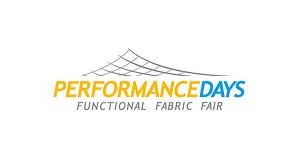 2 weeks ago I had the opportunity to attend the Performance Days in Munich, a trade fair dedicated to performance fabrics for outdoor and adventure gear. Like its larger sister ISPO – normally taking place at the end of January or the beginning of February, half way between the two Fashion Week cycles – Performance Days feature a high-end portfolio of performance and sports wear manufacturers, many of which actively develop and push the innovation agenda of their industry.
2 weeks ago I had the opportunity to attend the Performance Days in Munich, a trade fair dedicated to performance fabrics for outdoor and adventure gear. Like its larger sister ISPO – normally taking place at the end of January or the beginning of February, half way between the two Fashion Week cycles – Performance Days feature a high-end portfolio of performance and sports wear manufacturers, many of which actively develop and push the innovation agenda of their industry.
While the development push of the last 2 years in terms of chemical treatments (incl. dyes) of garments have been felt in apparel and interiors – including the wrath of Greenpeace’s PR machine and campaign professionalism -, in performance wear these events have pushed the whole industry past a ‘point of no return‘.
Performance wear always has been, and keeps being, a couple of steps ahead of apparel and interiors. When at the occasion of the last ISPO in January 2013 Greenpeace went after some major outdoor brands such as The North Face, this was the opening for yet another landslide of ‘sustainability activities’. Notably an immediate rise in BlueSign certifications.
Although few are happy with this development, BlueSign’s strong focus on chemicals has resulted in them being an intuitive ‘go to place’ for large brands, many of which now require all of their suppliers to go through the accreditation procedure-
Note: It has to be known at this stage that BlueSign does not sell so much its accreditation label, but instead sells the consulting – the assessments, reviews, process implementations. It is hence yet another label that does seemingly not properly separate audit and control, from implementation and standard definition.
The question of course is how come that performance wear is, in tendency, a couple of steps ahead of what is happening otherwise in textiles related industries, specifically apparel and interiors. There are four factors that play in favour of such a status:
Video: Patagonia’s Common Threads Recycling Programme, in Collaboration with the Japanese Fibre company Teijin
- Consumer pressure in performance wear is considerable in every aspect: for the quality of the products as well as with regards to how they are made.
The first for the sheer need of survival during adventures for which these items are used; the second because the very same people that use these items tend to be fierce stewards of the planet’s natural resources, particularly otherwise uninhabited and deserted areas with extreme conditions. They tend to be among to the first to witness the direct impact. - Performance wear usually operates at a relative high price point – equal to that of premium apparel – yet their consumers pay for performance, as the name says, rather than merely image. This adds additional pressure from the consumer side, which implies that the industry has to put the money where their mouth is, namely R&D.
- The type of materials used in performance wear is mostly at the cutting edge of what is possible to achieve, and the industry is an early adaptor of materials and technologies developed in research labs. Consequently, they are in a constant dialogue – positive or negative – with environmental regulation and legislation. Much of what can be achieved in performance wear in fact is down to chemical developments that require an active management of trade offs, not the least environmentally. The interest of customers, marketers and the regulator is to minimise these impacts – and to make sure that none of them gets embroiled in the campaigns and news the likes have been caused by Greenpeace.
- An industry culture used to push the boundaries and innovate constantly. With that, and the fact that they literally live off the planet’s natural environment, the incentive to push ahead and invest in research, development and structured experimentation is inherent.
This all said, it is equally clear that at events like ISPO and certainly the Performance Days only the top crew among suppliers is present, with the same being the case for the brands represented by their buyers. At large trade fairs, notably those taking places in China and Taiwan itself, a much broader range of suppliers is exhibiting, including those ‘in charge of’ the many fake items habitually on the market overseas (in China, fake North Face jackets could be had on the high street for the equivalent of $20 over 20 years ago already.)
Performance fabrics is no doubt where the innovation is happening in every sense of the word. For a reason it was Patagonia that managed to convince retail giant Walmart to embark on the ‘Higg Index’ adventure a few years ago.
In a similar vane – the high-end fashion and apparel industry needs to keep a close eye on what is happening in outdoor. There, many a problem has already at least been tackled if not already solved. Problems, that the fashion industry – 2 steps behind its more innovative sister industry – is yet to discover.

